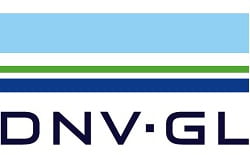DNV GL created the preliminary wind atlases for Zambia, Tanzania, and The Maldives, as part of phase 1 of an Energy Sector Management Assistance Program (ESMAP) project funded by the World Bank. The project aims to reveal the true extent of wind energy production potential in each of the three countries. DNV GL’s early test results have already revealed huge opportunities, with extensive wind flow modeling in Zambia, Tanzania and The Maldives indicating great wind energy production potential.
Each of these countries has its own energy challenges, one being a serious lack of proper functioning, modern power infrastructure. In Zambia, the government estimates that outside of one major city only 1-3% of the population has access to electricity. The Maldives is entirely reliant upon imported energy with large distances between the inhabited islands and the mainland, making energy transport costs very high. Additionally, the Maldives imports all its fuels in refined form and in very small quantities, which makes this form of fuel even more expensive. Costs for electricity in the country often exceed $1 per kWh, which is substantially higher than energy costs in developed countries.
Daran Rife, DNV GL’s Global Head of Mesoscale Modelling commented: “The potential of renewable resources in these regions is not yet well understood and they don’t currently have the means or expertise to get better insight. The idea behind these projects is to discover the potential of renewables in these countries, with all key outputs and datasets being made publicly available through the Global Atlas for Renewable Energy that is being developed by IRENA.
The governments of these countries will be able to use our maps to develop policies and strategies for wind energy. The maps are also an important tool for attracting investors and developers, who have thus far been reluctant to invest in the region. By creating these maps, we have removed a major risk obstacle for them.”
Phase 1 of the project began in June 2014 and is set to run until 2018. The first phase, completed in May saw DNV GL carry out wind flow modeling to create a preliminary atlas of wind energy production potential. DNV GL was also responsible for conducting intensive workshops for key governmental stakeholders and decision makers in each country, delivering training on interpretation of wind atlases, wind resource assessments, energy policy essentials, and bankable measurement campaigns.
The next phase of the project will involve the installation of met masts at various locations in each country to allow experts to collect real data for a period of two years. DNV GL will also train local companies to be able to build and maintain these masts in the future. The final stage involves creating a redefined and validated meso-micro wind atlas for each country, combining both the DNV GL models and the real-life measurements.
DNV GL’s is utilizing an interdisciplinary and multinational team of experts from the US, UK, Canada, Australia, and South Africa to work on the project.
David Walker, CEO, DNV GL – Energy said: "As the largest independent global energy expert DNV GL is uniquely placed to help solve the energy trilemma and help accelerate the world’s transition to a safer, smarter, greener energy future against the backdrop of conflicting technical, regulatory, economical and societal interests. For developing countries like Zambia, Tanzania and The Maldives, mapping potential wind energy resources is an important step towards a better access to renewable energy. The shared vision and path breaking work that DNV GL and the World Bank is demonstrating with these projects will help governmental stakeholders and developers understand the true renewable energy resources and help drive vital overseas investment in the region."
ESMAP is implementing a major global initiative designed to support renewable energy resource assessment and mapping for biomass, small hydro, solar and wind. It has allocated $22.5 million to support 12 country projects over a four-year period up to 2018.
The Global Atlas for Renewable Energy is an initiative that is coordinated by IRENA, the International Renewable Energy Agency. Its aim is to close the gap between nations with access to the means needed to evaluate their national renewable energy potential, and those countries lacking such a capability. As of January 2015, 67 countries and more than 50 institutes and partners contributed to the initiative.

